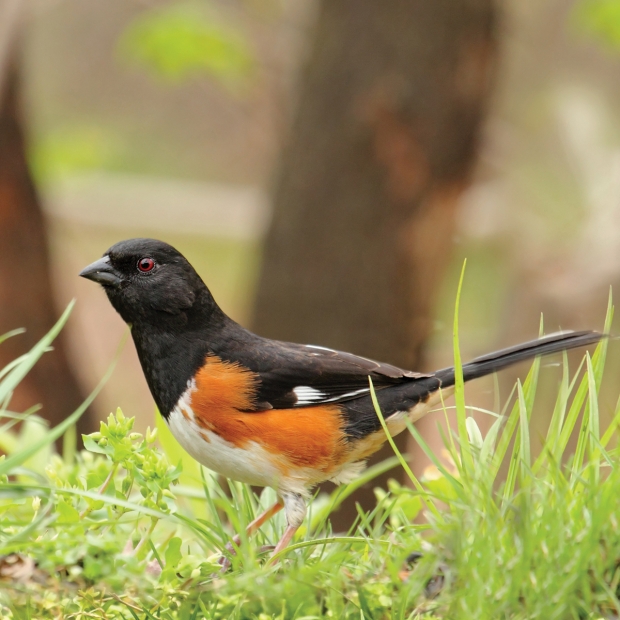
Marked in a strikingly handsome plumage of black, and warm, reddish brown feathers, with an underbelly of white, this songbird also sports slashes of white on its otherwise black tail feathers and wings in order to make a statement to other birds. Many also have red eyes.
- The classic Eastern Towhee song, performed by males, is a loud drink-your-tea! lasting about 1 second. The first note (drink) is sharp and energetic and the final note (tea) is a musical trill. Sometimes the song will start with more than one drink (!).
- They consume a variety of weed seeds including ragweed, smartweed, and native grasses, and also feed on acorns and fruit, including blackberries, blueberries, elderberries.
- The oldest known Eastern Towhee was at least 9 years old when it was recaptured and re-released in South Carolina. It was initially banded in the same state in 1937. The name "towhee," a simulation of the bird's call, was coined in 1731 by the naturalist and bird artist, Mark Catesby.
- Eastern Towhees utilize a number of threat displays to tell other towhees they’re not welcome. You may see rival males lift, spread, or droop one or both wings, and fan or flick their tails to show off the white parts of its anatomy. They are aggressive in defending their territory, often attacking intruding males or even their own reflection. Sadly, Towhees nesting near homes may collide with picture windows.
- These oversize sparrows like undergrowth—the edges of forests, thickets, and shrubby areas—and can often be heard as they scratch and rummage around, making far more noise than you’d expect for their size. Towhees are ground feeders and use a hop-and-scratch foraging method. While jumping forward with its head and tail up, it kicks its strong legs backwards simultaneously to uncover its food in the leaf litter.